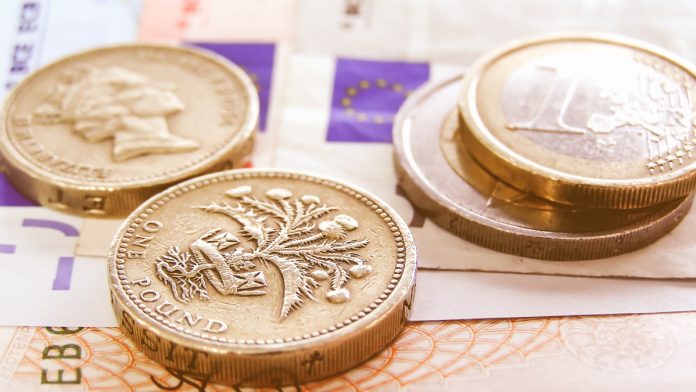The pound rallied into the end of 2018, closing on the 31st December 0.2% higher versus the euro. The pound to euro exchange rate hit a 5 day high of €1.1204 before closing the year out at €1.1123. The pound is edging higher in early trade on Wednesday, as Brexit remains in focus.
| What do these figures mean? |
|---|
| When measuring the value of a pair of currencies, one set equals 1 unit and the other shows the current equivalent. As the market moves, the amount will vary from minute to minute.h If the euro amount increases in this pairing, it’s positive for the pound. Or, if you were looking at it the other way around:1 EUR = 0.87271 GBPIn this example, €1 is equivalent to approximately £0.87. This measures the euro’s worth versus the British pound. If the sterling number gets larger, it’s good news for the euro. |
Comments from several ministers over the weekend regarding Brexit helped the pound put in a solid end-of-year after a dismal 2018. Comments by foreign minister Jeremy Hunt urging Brussels to offer the assurances needed to get the Brexit deal through Parliament calmed investors. He suggested that if the EU provided assurances that the Irish backstop would be temporal then the vote would pass through Parliament.
International Trade Secretary, Liam Fox’s comments that there was a 50-50 chance that Brexit would never happen if UK Prime Minister Theresa May’s is not voted through also offered support to the pound. The prospect of a hard, no deal Brexit edging further away lifted sterling.
| Why is a “soft” Brexit better for sterling than a “hard” Brexit? |
|---|
| A soft Brexit implies anything less than UK’s complete withdrawal from the EU. For example, it could mean the UK retains some form of membership to the European Union single market in exchange for some free movement of people, i.e. immigration. This is considered more positive than a “hard” Brexit, which is a full severance from the EU. The reason “soft” is considered more pound-friendly is because the economic impact would be lower. If there is less negative impact on the economy, foreign investors will continue to invest in the UK. As investment requires local currency, this increased demand for the pound then boosts its value. |
Today Jeremy Hunt embarks on a tour of Asia to draw support for post Brexit Britain. This will keep Brexit in the limelight. However, investors will also look towards UK manufacturing PMI (Purchasing Managers’ Index) data for clues over the health of the UK economy just months before it is due to leave the EU. Analysts are expecting manufacturing PMI to dip to 52.5 in January, down from 53.1 the previous month. This could dent the demand for pound.
| Why does poor economic data drag on a country’s currency? |
|---|
| Slowing economic indicators point to a slowing economy. Weak economies have weaker currencies because institutions look to reduce investments in countries where growth prospects are low and then transfer money to countries with higher growth prospects. These institutions sell out of their investment and the local currency, thus increasing supply of the currency and pushing down the money’s worth. So, when a country or region has poor economic news, the value of the currency tends to fall. |
Euro rallied as Italy avoids Brussels showdown
The euro also rallied into the end of 2018 on the news that Italy had finally squeezed a spending budget, that the EU would agree to, through Parliament. This brings to an end to a turbulent time for the country, which after weeks of wrangling agreed with the EU not to lift spending above 2% of GDP. This is above the 1.8% agreed to by the previous government but below the 2.4% proposed by the current populist government. Reduced spending is better for Italy, which already has a high debt pile, meaning the economy and politics should be more stable; a positive for the euro.
The euro was has started trading lower on Wednesday as investors look towards eurozone manufacturing PMI data. Concerns are growing that the eurozone’s economy could be starting to slow just as he European Central Bank have ended support from the asset purchase programme. Signs of weakness could send the euro lower.
This publication is provided for general information purposes only and is not intended to cover every aspect of the topics with which it deals. It is not intended to amount to advice on which you should rely. You must obtain professional or specialist advice before taking, or refraining from, any action on the basis of the content in this publication. The information in this publication does not constitute legal, tax or other professional advice from TransferWise Inc., Currency Live or its affiliates. Prior results do not guarantee a similar outcome. We make no representations, warranties or guarantees, whether express or implied, that the content in the publication is accurate, complete or up to date. Consult our risk warning page for more details.
This article was initially published on TransferWise.com from the same author. The content at Currency Live is the sole opinion of the authors and in no way reflects the views of TransferWise Inc.





